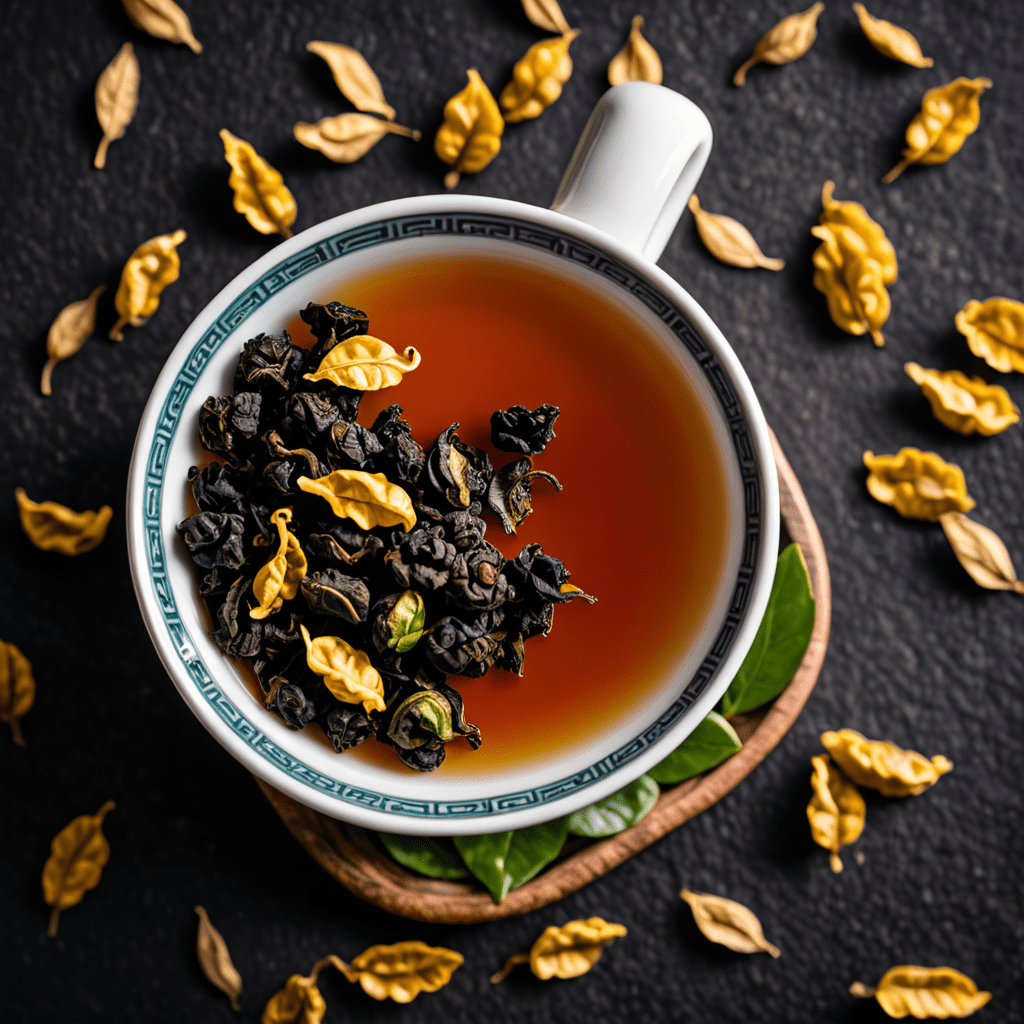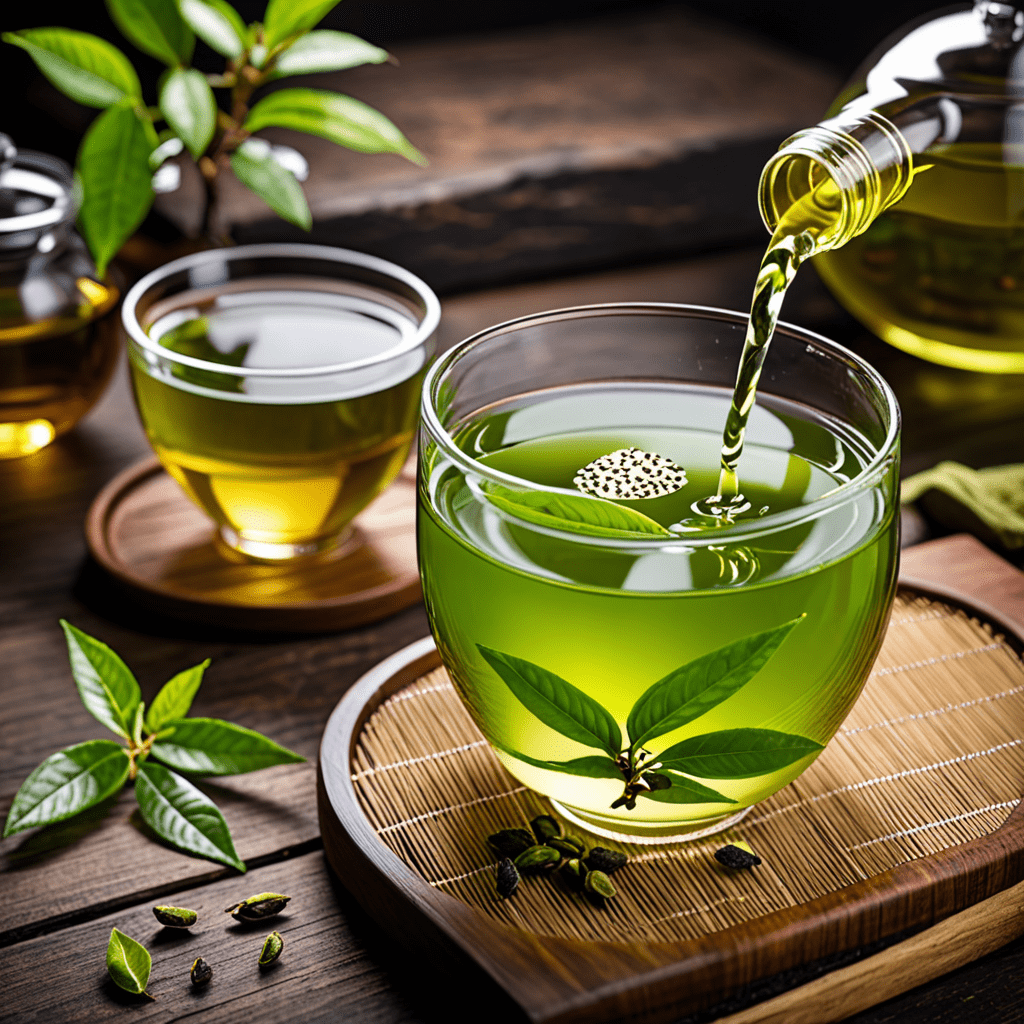Green Gold: Unveiling the Beauty of Ceylon Green Tea
1. Introduction: Exploring the Enchanting World of Green Gold
Green tea, a beverage steeped in history and tradition, has captivated tea lovers worldwide with its delicate flavor and renowned health benefits. Ceylon green tea, hailing from the verdant hills of Sri Lanka, stands as a shining example of this celebrated elixir. Uncover the captivating story of Ceylon green tea, from its ancient origins to its enduring legacy as a symbol of Sri Lankan excellence. Journey with us as we delve into the world of "Green Gold," exploring the captivating heritage, lush landscapes, and exquisite flavors that define this exceptional tea.
2. The Heritage of Ceylon Green Tea: A Journey Through Time
The history of Ceylon green tea is intertwined with the rich tapestry of Sri Lanka's past. Tea cultivation has flourished in this tropical haven for centuries, with the earliest records dating back to the 1820s. British planters, seeking to replicate the success of Indian tea plantations, introduced tea to Sri Lanka, and the island's favorable climate and fertile soil proved ideal for its cultivation. Over time, Ceylon green tea established a reputation for its exceptional quality, becoming a prized export and a source of national pride. Today, it continues to be a vital part of Sri Lanka's cultural heritage and economic fabric.
3. The Tea Gardens of Sri Lanka: Verdant Landscapes and Aromatic Treasures
Sri Lanka's tea gardens are a sight to behold, stretching across the country's central highlands. Verdant rows of tea bushes, meticulously manicured, blanket the hillsides, creating a picturesque landscape. The Nuwara Eliya region, affectionately known as "Little England," is renowned for its high-elevation tea gardens, producing some of the most aromatic and flavorful Ceylon green teas. The breathtaking vistas of these tea plantations, with their lush greenery and rolling hills, are sure to captivate any visitor.
4. The Art of Tea Cultivation: Nurturing the Green Gold
Cultivating Ceylon green tea is an art form that requires patience, expertise, and a deep understanding of the plant's needs. Tea bushes thrive in well-drained soil, with ample sunlight and rainfall. Careful attention is paid to pruning and harvesting techniques to ensure optimal quality. The leaves are handpicked during the peak of their freshness, preserving their delicate flavor and nutrient content. Skilled tea pluckers deftly select the two youngest leaves and a bud, known as the "two leaves and a bud," which produce the finest grades of Ceylon green tea.
5. The Unique Flavor Profile of Ceylon Green Tea: A Symphony of Taste
Ceylon green tea is renowned for its distinctive flavor profile, a harmonious blend of vegetal, floral, and slightly astringent notes. The delicate processing preserves the natural flavors of the tea leaves, resulting in a refreshing and invigorating brew. The flavor varies depending on the region and elevation where the tea is grown, with high-elevation teas exhibiting a more complex and nuanced character. Whether enjoyed hot or iced, Ceylon green tea offers a delightful symphony of flavors that captivates the palate.
6. The Health Benefits of Green Gold: Unlocking Nature's Elixir
Beyond its captivating flavor, Ceylon green tea is revered for its remarkable health benefits. It is a rich source of antioxidants, particularly flavonoids and epigallocatechin gallate (EGCG), which have been linked to numerous positive health effects. Studies have suggested that regular consumption of green tea may contribute to reducing the risk of chronic diseases, improving brain function, boosting metabolism, and aiding weight loss. Additionally, green tea has anti-inflammatory and antimicrobial properties, making it a natural remedy for various ailments.
7. The Tea Industry in Sri Lanka: A Vital Economic Engine
The tea industry is a cornerstone of the Sri Lankan economy, playing a pivotal role in generating revenue and employment. Tea exports contribute significantly to the country's foreign exchange earnings, and the sector provides livelihoods for millions of Sri Lankans. The government actively supports the industry through research and development, quality control initiatives, and marketing campaigns. The Sri Lanka Tea Board, a government body, is responsible for regulating and promoting the tea industry, maintaining its high standards and global reputation.
8. The Cultural Significance of Tea in Sri Lanka: A Beverage of Tradition
Tea holds an esteemed place in Sri Lankan culture, deeply entwined with the country's history and social fabric. The ritual of tea drinking is an integral part of daily life, with families and friends gathering over a pot of tea to socialize and bond. Tea is served on various occasions, from formal events to casual gatherings, reflecting its importance in Sri Lankan society. The traditional Sri Lankan breakfast often includes a glass of milky green tea, a delightful way to start the day.
9. Sustainability in the Tea Industry: Preserving the Green Gold
Sustainability is a cornerstone of the Sri Lankan tea industry. Tea plantations have adopted environmentally sound practices to minimize their ecological footprint. These measures include using organic fertilizers, implementing soil conservation techniques, and promoting biodiversity by planting shade trees. The industry is also committed to reducing water consumption and promoting energy efficiency in its operations. By adhering to sustainable practices, the tea industry ensures the long-term viability of Ceylon green tea production for generations to come.
10. Conclusion: The Allure of Green Gold: A Timeless Treasure
Ceylon green tea, a beverage born from the verdant hills of Sri Lanka, stands as a testament to the country's rich cultural heritage and commitment to excellence. Its captivating flavor, remarkable health benefits, and deep-rooted cultural significance make it a true "Green Gold." From its humble beginnings to its widespread acclaim, Ceylon green tea embodies the spirit of Sri Lanka, offering a unique sensory experience that captivates tea lovers around the world. As the world continues to seek healthier and more sustainable beverages, Ceylon green tea shines as a true gem, a timeless treasure to be celebrated and enjoyed for generations to come.
FAQ
What does Ceylon green tea taste like?
Ceylon green tea is known for its delicate flavor profile, characterized by vegetal, floral, and slightly astringent notes. High-elevation teas exhibit a more complex and nuanced character.
What are the health benefits of Ceylon green tea?
Ceylon green tea is rich in antioxidants that may contribute to reducing the risk of chronic diseases, improving brain function, boosting metabolism, and aiding weight loss. It also has anti-inflammatory and antimicrobial properties.
How is Ceylon green tea cultivated?
Ceylon green tea is cultivated in the verdant hills of Sri Lanka, with meticulous attention paid to soil quality, sunlight, and rainfall. Tea bushes are pruned and harvested by hand to ensure optimal quality.
What is the cultural significance of tea in Sri Lanka?
Tea holds an esteemed place in Sri Lankan culture, deeply entwined with the country's history and social fabric. Tea drinking is an integral part of daily life, with families and friends gathering over a pot of tea to socialize and bond.


